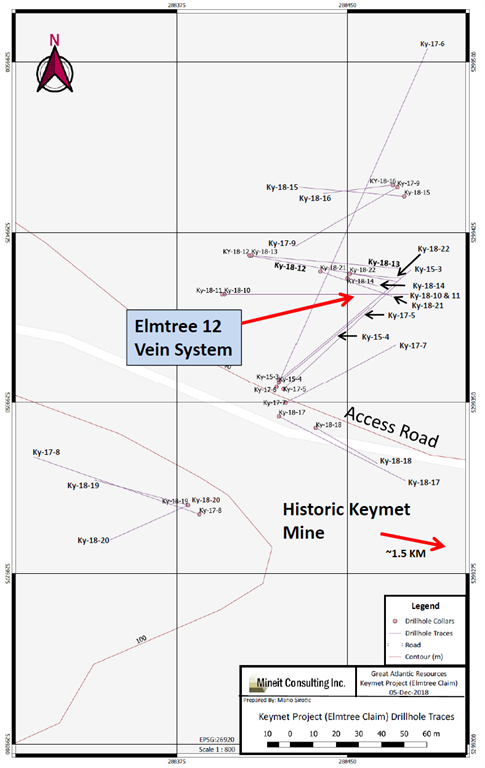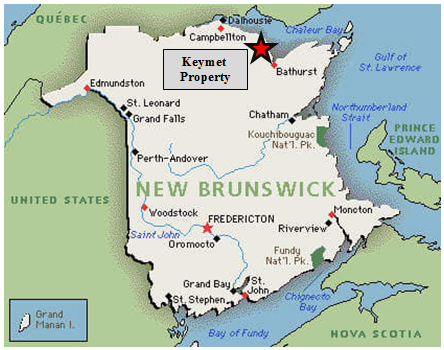
- Two field programs in Labrador over 2 seasons 26,000 soil samples, 1,547 lake sediment samples and 728 rock samples over area that covered 1,701 square kilometres,
- Narrowed exploration focus to the two most prospective properties having identified regional scale gold anomalies on both
- Ashuanipi: anomalies identified a 15 kilometre long by 2 to 6 kilometre wide north-south trend and a second 14 kilometre long by 2 to 4 kilometre wide east-west trend.
- Hopedale project successfully identified gold mineralization over a three km segment of the northern Florence Lake greenstone belt known as Thurber Dog.
- Gold anomalies also occurred along the entire 40km length of the southern Florence Lake greenstone belt.
- Summer 2019 – Evaluate multiple compelling targets and undertake the first drilling for gold on either property.
March 28, 2019
It has been less than two years since I met Shawn Ryan and launched Labrador Gold and yet we have accomplished so much in that short time. We raised over $5 million, and in the process attracted investors such as Mr. Rob McEwen, Chairman and Chief Owner of McEwen Mining Inc., Plethora Precious Metals Fund, RyanWood principals Shawn Ryan and Cathy Wood, as well as friends and associates of management. We completed two field programs in Labrador, taking over 26,000 soil samples, 1,547 lake sediment samples and 728 rock samples. Following the first program we narrowed our focus to the two most prospective properties having identified regional scale gold anomalies on both. This year we will evaluate multiple compelling targets and undertake the first drilling to be carried out for gold on either property.
Both Shawn and I started in the mining industry when companies still did grassroots, reconnaissance scale exploration as a matter of course. We routinely used stream sediment sampling, soil sampling, till sampling and prospecting over large properties to continuously narrow down the search to the most prospective areas. Done correctly, it is an unbiased means of rapidly assessing the exploration potential of a region and it works. Shawn used soil sampling as the primary means for discovering gold deposits in the Yukon that add up to over 7.5 million ounces. I was part of team that used soil sampling to find the Navachab gold deposit in Namibia, which still had resources of 3.9 million ounces in 2014 following 15 years of production. Based on these successes it made sense to apply the same method to the Labrador properties.
Labrador Gold is the first company to take such a systematic approach to gold exploration in Labrador. Shawn used publicly available data, including mineral occurrences and assays of lake sediments, soil samples, and rock samples to stake three properties that covered 1,701 square kilometres, an area just smaller than the Indian Ocean island of Mauritius. We started narrowing the area down in 2017 with regional scale soil and lake sediment sampling and limited prospecting. The results were encouraging.
Two of the properties, Hopedale and Ashuanipi, showed significant gold anomalies in both soils and lake sediments with values up to 2.1g/t in the soil samples. At Ashuanipi the anomalies identified a 15 kilometre long by 2 to 6 kilometre wide north-south trend and a second 14 kilometre long by 2 to 4 kilometre wide east-west trend. The anomalies are broadly associated with magnetic highs and do not show any correlation with specific rock types suggesting a structural control on the localization of the gold anomalies. As a result of the successful program we added claims to the northern claim block in both Labrador and Quebec to cover potential extensions of the anomalies.
Gold in soil anomalies at the Hopedale project successfully picked up known gold mineralization over a three km segment of the northern Florence Lake greenstone belt known as Thurber Dog indicating that the technique works in Labrador. What was particularly exciting was that gold anomalies also occurred along the entire 40km length of the southern Florence Lake greenstone belt. This belt has many characteristics of greenstone belts elsewhere in the world including major crustal scale structures, greenschist facies metamorphism, the presence of felsic porphyries and granitic intrusions and similar volcanic rocks. In terms of size, it is intermediate between the Kirkland Lake and Timmins gold camps of Ontario. Such greenstone belts are prolific hosts of gold elsewhere in the world. As such, and based on our results so far, it is quite possible that future exploration may result in the discovery of one or more gold deposits at Florence Lake. In terms of exploration maturity, Florence Lake is at the stage the Timmins camp was over a hundred years ago.
Encouraged by the success of our 2017 field work, we planned a follow up program of detailed soil sampling on grids with lines spaced at 100 metres and sample intervals of 25 metres along the lines. This would allow better resolution of potential gold mineralization highlighted by the samples. At Ashuanipi, we took 7,475 soil samples on 18 grids across the Ashuanipi north claim block and along 61 reconnaissance soil lines over the claims staked in 2018. Results of analyses showed significant gold anomalies in all but two of the 18 grids and confirmed the 15km north-south anomalous trend with values up to 8,970 ppb Au (8.97g/t) and 67 samples containing more than 100 ppb (0.1g/t) Au. These results suggest a robust mineralized system that is regional in extent with elevated values indicating potential sites of near surface gold mineralization.
At Hopedale, we took more than 10,000 soil samples on 12 grids along the length of the Florence Lake greenstone belt covering anomalous gold-in-soil targets with favorable geology and structure. Results showed 34 samples with values greater than 100 ppb (0.1g/t) Au, with five of these samples grading greater than 1,000 ppb (1g/t) Au. Elevated gold values were found in samples from all 12 grids. The highest concentrations of samples with anomalous gold are found in the Thurber Dog, Jasmine and Misery grids. The anomalies extend along strike for 5km at Thurber Dog and 1.8km at Misery. Rock samples collected during mapping and prospecting showed 80 samples with values greater than 0.1 g/t gold including 17 samples that assayed greater than 1 g/t gold with a high of 11.4 g/t gold in a select grab sample from a quartz vein with pyrite and arsenopyrite mineralization.
Our first two field seasons using systematic sampling to narrow down areas of potential gold mineralization have been a success. Three areas were identified for further follow up on each of the Hopedale and Ashuanipi properties. Compilation and interpretation of all data including new aeromagnetic data, will refine these areas to ensure efficient, targeted assessment of their potential in the field. Initial follow up will include detailed mapping and rock sampling of each area. Once we receive the assays we expect to begin a drilling program on the most prospective targets in late summer.
The significant decline in discovery rates worldwide over the past decade calls for a more disciplined approach to exploration with longer term thinking. We have embraced this idea with our work in Labrador over the past two years and with the support of our shareholders have made big strides towards discovery. Based on our results to date I have a feeling that the 2019 field season will be an exciting one. I hope you will join us for the ride.
Maps and images from the Hopedale and Ashuanipi properties can be found at: https://www.labradorgold.com/projects/
Follow us on Twitter: @LabGoldCorp
Roger Moss
President and CEO
Labrador Gold Corp.
416-704-8291









